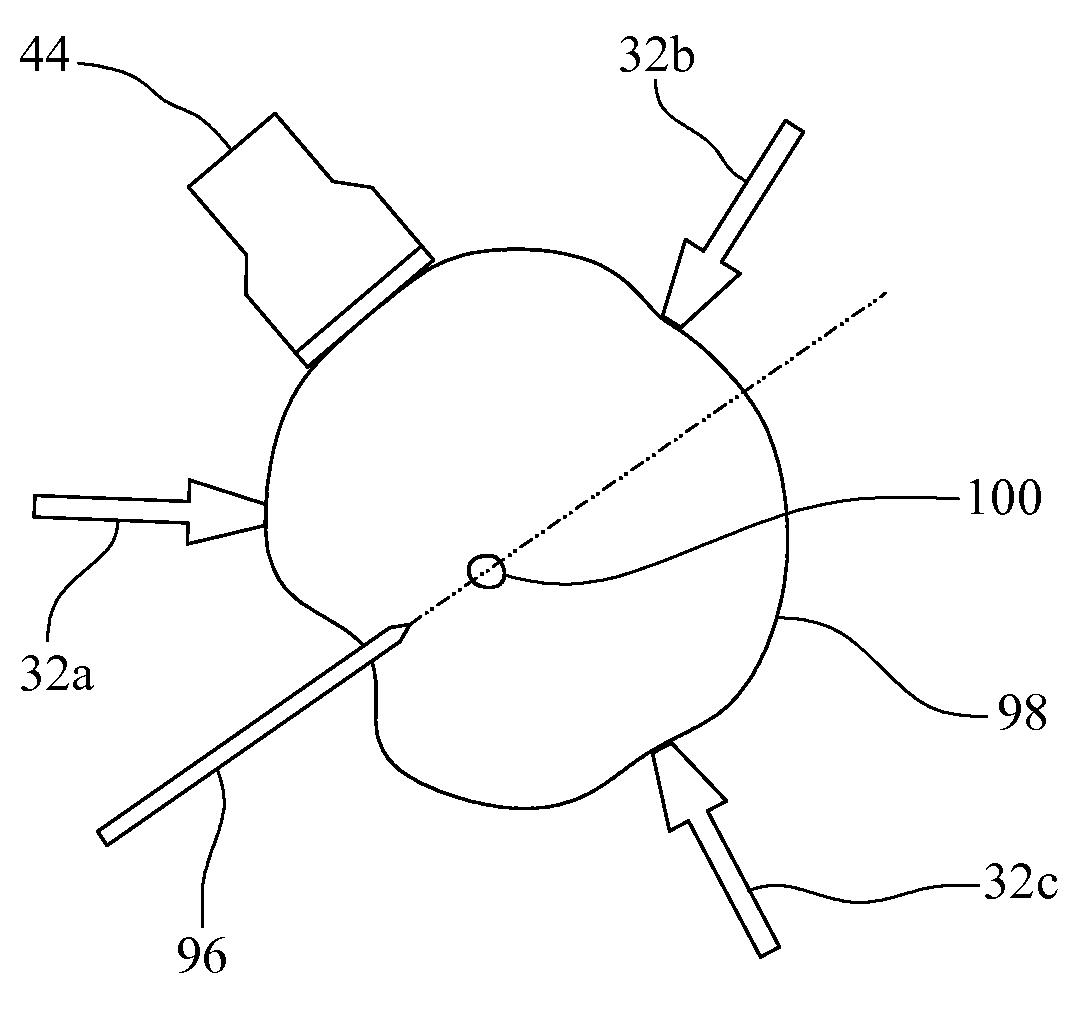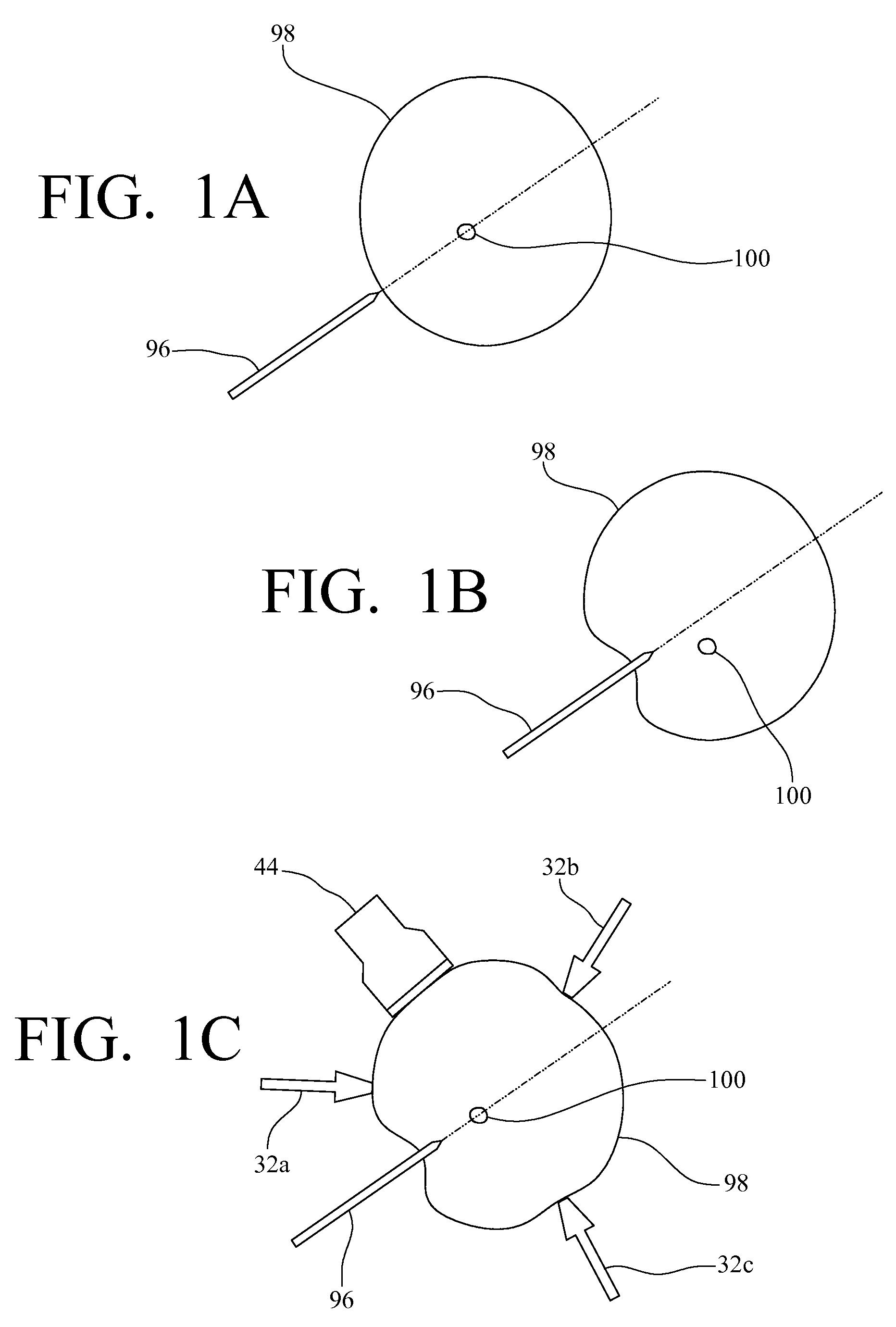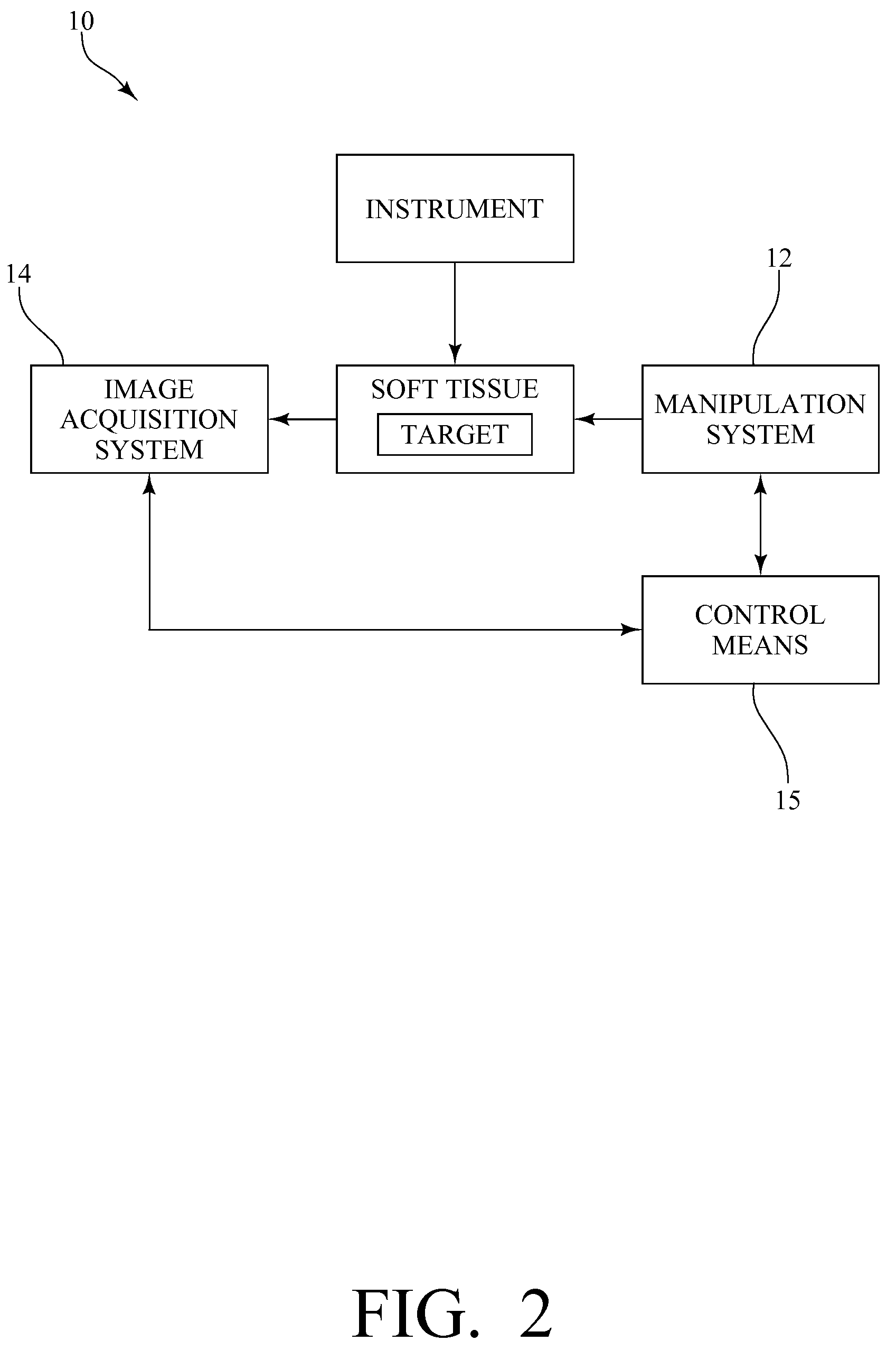System, method and device for positioning a target located within soft tissue in a path of an instrument
a target and soft tissue technology, applied in the field of systems, methods and devices for positioning a target located within soft tissue in the path of an instrument, can solve the problems of poor maneuverability of the biopsy needle, architectural distortion and target deflection, and significant technical challenges, and achieve the effect of minimizing the tracking error in the position of the targ
- Summary
- Abstract
- Description
- Claims
- Application Information
AI Technical Summary
Benefits of technology
Problems solved by technology
Method used
Image
Examples
experiment 1
To Demonstrate Accuracy of Target Positioning Using External Force on the Surface of the Phantom During Needle Insertion
[0112]For the first experiment, the target is initially located at the origin and the needle is inserted along the Y axis. Due to inhomogeneity in the phantom the target moves away from the needle path during insertion. Linear actuators are positioned along the X axis to steer the target towards the needle path (Y axis). During this experiment the force applied by the needle on the phantom is treated as a disturbance to the system. The task of the controller is to position the target on the Y axis. The position of the target along the Y axis is not controlled since the needle will intersect with the target no matter where it is located on the Y axis. In this experiment a PI controller is used for controlling the position of the target.
[0113]FIG. 11 shows a plot of the position response of the target (along the X axis) in an inhomogeneous phantoms. This phantom has ...
experiment 2
To Demonstrate Coordination of Target Positioning and Dynamic Target Tracking During Needle Insertion
[0116]For the second experiment, linear actuators are used to position the target during a needle insertion task. The target is initially located at the origin and the needle is inserted along the Y axis. The US probe is placed over the phantom such that the imaging plane (XZ plane) is orthogonal to the needle insertion direction. During a biopsy procedure, the imaging plane has to be oriented along the needle insertion direction. In this experiment the US probe is placed orthogonally to demonstrate the ability of the system to track the target when it moves out of the imaging plane during a real-time needle insertion procedure.
[0117]In this experiment, during needle insertion, the target moves away from the needle path and out of the imaging plane of the US probe. Two linear actuators positioned along the X axis are used to steer the target towards the needle path (Y axis), similar ...
experiment 3
To Demonstrate Reliability of the Contact Detection Algorithm
[0121]In this experiment target manipulation and tracking are disabled. Position of the phantom is fixed and the US probe is moved normal to the surface of the phantom. FIG. 15A shows the movement of the probe. The X axis represents the surface of the phantom. The US probe is in contact with the phantom if the probe position is nonnegative and the probe breaks contact with the phantom if its position is negative. FIG. 15B shows the contact state of the probe. If the US probe is in contact, it is represented by 1 (True). If the US probe is not in contact, it is represented by 0 (False). The contact state is determined using the algorithm presented above. Comparing FIG. 15A and FIG. 15B, it is observed that the algorithm reliably predicts contact state transitions of the probe. During a biopsy procedure, position data cannot be used to detect contact state transitions due to deformation of the breast. Hence, contact state de...
PUM
 Login to View More
Login to View More Abstract
Description
Claims
Application Information
 Login to View More
Login to View More - R&D
- Intellectual Property
- Life Sciences
- Materials
- Tech Scout
- Unparalleled Data Quality
- Higher Quality Content
- 60% Fewer Hallucinations
Browse by: Latest US Patents, China's latest patents, Technical Efficacy Thesaurus, Application Domain, Technology Topic, Popular Technical Reports.
© 2025 PatSnap. All rights reserved.Legal|Privacy policy|Modern Slavery Act Transparency Statement|Sitemap|About US| Contact US: help@patsnap.com



